- Home
- D. H. Lawrence
Life with a Capital L Page 2
Life with a Capital L Read online
Page 2
Many of the later essays were written for money when Lawrence lacked the energy and will to concentrate on sustained imaginative work. ‘I think perhaps it’s a waste to write any more novels,’ he wrote to Nancy Pearn at the office of his literary agent Curtis Brown. ‘I could probably live by little things. I mean in magazines.’ The patient Ms Pearn proved equally adept at finding homes for these pieces and securing invitations to come up with further ‘little articles for the newspapers’ which he considered ‘far the best way of making money’.26
Irrespective of how such things originated, or of Lawrence’s motives in undertaking them, the act of writing invariably yields something – and this is the word with which Hoagland concludes his too-late defence – magnificent. Nowhere is this more evident than in the introduction he contributed to Magnus’s Memoirs of the Foreign Legion. Largely about money, it was written to discharge Magnus’s debts and recoup money Lawrence had himself lost, but the extended length of the piece effectively wipes out – or writes off – its initiating motive. More generally, when Lawrence was dashing off ‘little things’ he was in some ways playing to his strengths, unburdening himself, partly in the sense of expressing himself freely but also without the psychic weight of ambition that bears down on The Rainbow or Women in Love.
In a letter concerning the whereabouts of misplaced manuscripts his friend Dorothy Brett noted astutely that ‘When a careless man like Lawrence becomes careful – & has no track of his carelessness – he is apt to fly off the handle.’27 The carefree attitude he could bring to essay-writing had unexpected advantages. Throughout his career Lawrence threw out bottles containing messages energetically disdaining whatever it was he professed not to care about at any given moment. In one of the last pieces he wrote, an introduction to The Dragon of the Apocalypse by Frederick Carter – another example of a piece that outgrew its brief as Lawrence ended up writing his very own Apocalypse – he set out some of the reasons why, and the ways in which, we continue care about him. ‘I don’t care what a man sets out to prove, so long as he will interest me and carry me away. I don’t in the least care whether he [Carter] proves his point or not, so long as he has given me a real imaginative experience by the way, and not another set of bloated thought-forms.’ He then goes on to anticipate our potential objections: ‘What does it matter if it is confused? What does it matter if it repeats itself? What does it matter if in parts it is not very interesting, when in other parts it is intensely so, when it suddenly opens doors and lets out the spirit into a new world, even if it is a very old world!’28
Here, on page after page, is Lawrence as a writer of endless renewal: our perpetual contemporary.
Notes
1 Twilight in Italy (Harmondsworth: Penguin, 1997), p. 144
2 The Letters of D. H. Lawrence Volume I 1901–13, edited by James T. Boulton (Cambridge: Cambridge University Press, 1979), p. 503
3 Selected Letters of Philip Larkin: 1940–85, edited by Anthony Thwaite, (London: Faber, 1988), p. 154
4 Studies in Classic American Literature (Harmondsworth: Penguin, 1971), pp. 88, 71, 68
5 Selected Letters of Philip Larkin, p. 101
6 John Fowles, The Magus (London: Cape, 1966), p. 1
7 Quoted by Janet Byrne in A Genius for Living: A Biography of Frieda Lawrence (London: Bloomsbury, 1995), p. 385
8 Kate Millett, Sexual Politics (London: Rupert Hart-Davis, 1971), p. 296
9 Tony Hoagland, Donkey Gospel (Minneapolis: Graywolf, 1998), p. 31. (It is interesting to note how Rebecca West was, in part, similarly provoked into writing her ‘Elegy’: ‘What I hate is the sniggering about Lawrence and the actual candid joy in his death …’ Selected Letters of Rebecca West, edited by Bonnie Kime Scott (New Haven: Yale University Press, 2000), p. 130)
10 George Orwell, Collected Essays, Journalism and Letters Volume 4, edited by Sonia Orwell and lan Angus (Harmondsworth: Penguin, 1970), p. 52
11 Quoted by Mark Kinkead-Weekes in D. H. Lawrence: Triumph to Exile (Cambridge: Cambridge University Press, 1996), p. 684
12 Raymond Williams, The English Novel from Dickens to Lawrence (London: Chatto & Windus, 1970), p. 169
13 Selected Essays, edited by Richard Aldington (Harmondsworth: Penguin, 1950), p. 8
14 Dean Young, elegy on toy piano (Pittsburgh: University of Pittsburgh Press, 2005), p. 61
15 Quoted by Bill Goldstein in The World Broke in Two (London: Bloomsbury, 2017), p. 85
16 The Letters of D. H. Lawrence Volume IV 1921–24, edited by Warren Roberts, James T. Boulton and Elizabeth Mansfield (Cambridge: Cambridge University Press, 1987), p. 238
17 Late Essays and Articles, edited by James T. Boulton (Cambridge: Cambridge University Press, 2004), p. xxvii
18 The Letters of D. H. Lawrence Volume II 1913–16, edited by George J. Zytaruk and James T. Boulton (Cambridge: Cambridge University Press, 1981), p. 212
19 Letters Volume II, p. 292 and p. 309
20 Letters Volume II, p. 363
21 The Letters of D. H. Lawrence Volume VI 1927–28, edited by James T. Boulton, Margaret H. Boulton and Gerald M. Lacy (Cambridge: Cambridge University Press, 1991), p. 507; Joyce on Lawrence quoted by Richard Ellmann in James Joyce (Oxford: Oxford University Press, 1976), p. 628
22 Letters Volume VI, p. 548
23 The Complete Poems, edited by Vivian De Sola Pinto and F. Warren Roberts (Harmondsworth: Penguin, 1977), p. 672
24 Quoted by Byrne in A Genius for Living, p. 376
25 Twilight in Italy, p. 154; Complete Poems, p. 393
26 Letters Volume VI, p. 29, and Volume VII, p. 41
27 Quoted in footnote in The Letters of D. H. Lawrence Volume VII 1928–30, edited by Keith Sagar and James T. Boulton (Cambridge: Cambridge University Press, 1993), p. 342
28 Apocalypse (London: Penguin 1995), p. 50 and p. 54
Christs in the Tirol (1912)
The real Tirol does not seem to extend far south of the Brenner, and northward it goes right to the Starnberger See. Even at Sterzing the rather gloomy atmosphere of the Tirolese Alps is being dispersed by the approach of the South. And, strangely enough, the roadside crucifixes become less and less interesting after Sterzing. Walking down from Munich to Italy, I have stood in front of hundreds of Martertafeln; and now I miss them; these painted shrines by the Garda See are not the same.
I, who see a tragedy in every cow, began by suffering from the Secession pictures in Munich. All these new paintings seemed so shrill and restless. Those that were meant for joy shrieked and pranced for joy, and sorrow was a sensation to be relished, curiously; as if we were epicures in suffering, keen on a new flavour. I thought with kindliness of England, whose artists so often suck their sadness like a lollipop, mournfully, and comfortably.
Then one must walk, as it seems, for miles and endless miles past crucifixes, avenues of them. At first they were mostly factory made, so that I did not notice them, any more than I noticed the boards with warnings, except just to observe they were there. But coming among the Christs carved in wood by the peasant artists, I began to feel them. Now, it seems to me, they create almost an atmosphere over the northern Tirol, an atmosphere of pain.
I was going along a marshy place at the foot of the mountains, at evening, when the sky was a pale, dead colour and the hills were nearly black. At a meeting of the paths was a crucifix, and between the feet of the Christ a little red patch of dead poppies. So I looked at him. It was an old shrine, and the Christus was nearly like a man. He seemed to me to be real. In front of me hung a Bavarian peasant, a Christus, staring across at the evening and the black hills. He had broad cheek-bones and sturdy limbs, and he hung doggedly on the cross, hating it. He reminded me of a peasant farmer, fighting slowly and meanly, but not giving in. His plain, rudimentary face stared stubbornly at the hills, and his neck was stiffened, as if even yet he were struggling away from the cross he resented. He would not yield to it. I stood in front of him, and realized him. He might have said, ‘Yes, here I am, and it’s
bad enough, and it’s suffering, and it doesn’t come to an end. Perhaps something will happen, will help. If it doesn’t, I s’ll have to go on with it.’ He seemed stubborn and struggling from the root of his soul, his human soul. No Godship had been thrust upon him. He was human clay, a peasant Prometheus-Christ, his poor soul bound in him, blind, but struggling stubbornly against the fact of the nails. And I looked across at the tiny square of orange light, the window of a farmhouse on the marsh. And, thinking of the other little farms, of how the man and his wife and his children worked on till dark, intent and silent, carrying the hay in their arms out of the streaming thunder-rain which soaked them through, I understood how the Christus was made.
And after him, when I saw the Christs posing on the Cross, à la Guido Reni, I recognized them as the mere conventional symbol, meaning no more Christ than St George and the Dragon on a five-shilling-piece means England.
There are so many Christs carved by men who have carved to get at the meaning of their own soul’s anguish. Often, I can distinguish one man’s work in a district. In the Zemm valley, right in the middle of the Tirol, there are some half-dozen crucifixes by the same worker, who has whittled away in torment to see himself emerge out of the piece of timber, so that he can understand his own suffering, and see it take on itself the distinctness of an eternal thing, so that he can go on further, leaving it. The chief of these crucifixes is a very large one, deep in the Klamm, where it is always gloomy and damp. The river roars below, the rock wall opposite reaches high overhead, pushing back the sky. And by the track where the pack-horses go, in the cold gloom, hangs the large, pale Christ. He has fallen forward, just dead, and the weight of his full-grown, mature body is on the nails of the hands. So he drops, as if his hands would tear away, and he would fall to earth. The face is strangely brutal, and is set with an ache of weariness and pain and bitterness, and his rather ugly, passionate mouth is shut with bitter despair. After all, he had wanted to live and to enjoy his manhood. But fools had ruined his body, and thrown his life away, when he wanted it. No one had helped. His youth and health and vigour, all his life, and himself, were just thrown away as waste. He had died in bitterness. It is sombre and damp, silent save for the roar of water. There hangs the falling body of the man who had died in bitterness of spirit, and the driver of the pack-horses takes off his hat, cringing in his sturdy cheerfulness as he goes beneath.
He is afraid. I think of the carver of the crucifix. He also was more or less afraid. They all, when they carved or erected these crucifixes, had fear at the bottom of their hearts. And so the monuments to physical pain are found everywhere in the mountain gloom. By the same hand that carved the big, pale Christ I found another crucifix, a little one, at the end of a bridge. This Christ had a fair beard instead of a black one, and his body was hanging differently. But there was about him the same bitterness, the same despair, even a touch of cynicism. Evidently the artist could not get beyond the tragedy that tormented him. No wonder the peasants are afraid, as they take off their hats in passing up the valley.
They are afraid of physical pain. It terrifies them. Then they raise, in their startled helplessness of suffering, these Christs, these human attempts at deciphering the riddle of pain. In the same way they paint the humorous little pictures of some calamity – a man drowned in a stream or killed by a falling tree – and nail it up near the scene of the accident. ‘Memento mori,’ they say everywhere. And so they try to get used to the idea of death and suffering, to rid themselves of some of the fear thereof. And all tragic art is part of the same attempt.
But some of the Christs are quaint. One I know is very elegant, brushed and combed. ‘I’m glad I am no lady,’ I say to him. For he is a pure lady-killer. But he ignores me utterly, the exquisite. The man who made him must have been dying to become a gentleman.
And a fair number are miserable fellows. They put up their eyebrows plaintively, and pull down the corners of their mouths. Sometimes they gaze heavenwards. They are quite sorry for themselves.
‘Never mind,’ I say to them. ‘It’ll be worse yet, before you’ve done.’
Some of them look pale and done-for. They didn’t make much fight; they hadn’t much pluck in them. They make me sorry.
‘It’s a pity you hadn’t got a bit more kick in you,’ I say to them. And I wonder why in England one sees always this pale, pitiful Christ with no ‘go’ in him. Is it because our national brutality is so strong and deep that we must create for ourselves an anæmic Christus, for ever on the whine; either that, or one of those strange neutrals with long hair, that are supposed to represent to our children the Jesus of the New Testament.
In a tiny glass case beside the high-road where the Isar is a very small stream, sits another Christ that makes me want to laugh, and makes me want to weep also. His little head rests on his hand, his elbow on his knee, and he meditates, half-wearily. I am strongly reminded of Walther von der Vogelweide and the German medieval spirit. Detached, he sits, and dreams, and broods, in his little golden crown of thorns, and his little cloak of red flannel, that some peasant woman has stitched for him.
‘Couvre-toi de gloire, Tartarin – couvre-toi de flanelle,’ I think to myself.
But he sits, a queer little man, fretted, plunged in anxiety of thought, and yet dreaming rather pleasantly at the same time. I think he is the forefather of the warm-hearted German philosopher and professor.
He is the last of the remarkable Christs of the peasants that I have seen. Beyond the Brenner an element of unreality seems to creep in. The Christs are given great gashes in the breast and knees, and from the brow and breast and hands and knees streams of blood trickle down, so that one sees a weird striped thing in red and white that is not at all a Christus. And the same red that is used for the blood serves also to mark the path, so that one comes to associate the Martertafeln and their mess of red stripes with the stones smeared with scarlet paint for guidance. The wayside chapels, going south, become fearfully florid and ornate, though still one finds in them the little wooden limbs, arms and legs and feet, and little wooden cows or horses, hung up by the altar, to signify a cure in these parts. But there is a tendency for the Christs themselves to become either neuter or else sensational. In a chapel near St Jakob, a long way from the railway, sat the most ghastly Christus I can imagine. He is seated, after the crucifixion. His eyes, which are turned slightly to look at you, are bloodshot till they glisten scarlet, and even the iris seems purpled. And the misery, the almost criminal look of hate and misery on the bloody, disfigured face is shocking. I was amazed at the ghastly thing: moreover, it was fairly new.
South of the Brenner again, in the Austrian Tirol, I have not seen anyone salute the Christus: not even the guides. As one goes higher the crucifixes get smaller and smaller. The wind blows the snow under the tiny shed of a tiny Christ: the guides tramp stolidly by, ignoring the holy thing. That surprised me. But perhaps these were particularly unholy men. One does not expect a great deal of an Austrian, except real pleasantness.
So, in Austria, I have seen a fallen Christus. It was on the Jaufen, not very far from Meran. I was looking at all the snowpeaks all around, and hurrying downhill, trying to get out of a piercing wind, when I almost ran into a very old Martertafel. The wooden shed was silver-grey with age, and covered on the top with a thicket of lichen, weird, grey-green, sticking up its tufts. But on the rocks at the foot of the cross was the armless Christ, who had tumbled down and lay on his back in a weird attitude. It was one of the old, peasant Christs, carved out of wood, and having the long, wedge-shaped shins and thin legs that are almost characteristic. Considering the great sturdiness of a mountaineer’s calves, these thin, flat legs are interesting. The arms of the fallen Christ had broken off at the shoulders, and they hung on their nails, as ex voto limbs hang in the shrines. But these arms dangled from their palms, one at each end of the cross, the muscles, carved in wood, looking startling, upside down. And the icy wind blew them backwards and forwards. There, in that bleak
place among the stones, they looked horrible. Yet I dared not touch either them or the fallen image. I wish some priest would go along and take the broken thing away.
So many Christs there seem to be: one in rebellion against his cross, to which he was nailed; one bitter with the agony of knowing he must die, his heart-beatings all futile; one who felt sentimental; one who gave in to his misery; one who was a sensationalist; one who dreamed and fretted with thought. Perhaps the peasant carvers of crucifixes are right, and all these were found on the same cross. And perhaps there were others too: one who waited for the end, his soul still with a sense of right and hope; one ashamed to see the crowd make beasts of themselves, ashamed that he should provide for their sport; one who looked at them and thought: ‘And I am of you. I might be among you, yelling at myself in that way. But I am not, I am here. And so –’
All those Christs, like a populace, hang in the mountains under their little sheds. And perhaps they are falling, one by one. And I suppose we have carved no Christs, afraid lest they should be too like men, too like ourselves. What we worship must have exotic form.

 Look! We Have Come Through!
Look! We Have Come Through!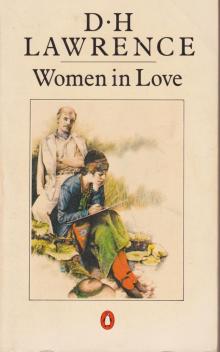 Women in Love
Women in Love The Ladybird
The Ladybird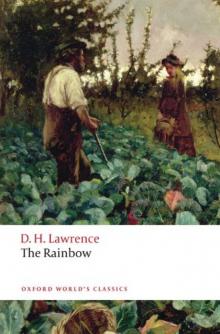 The Rainbow
The Rainbow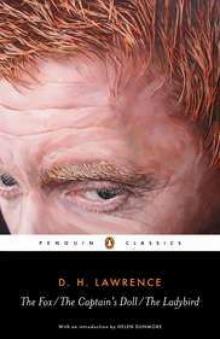 The Captain's Dol
The Captain's Dol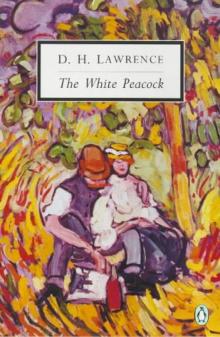 The White Peacock
The White Peacock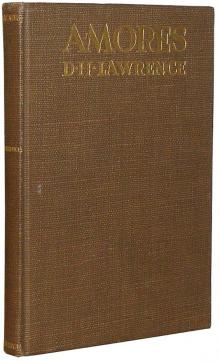 Amores
Amores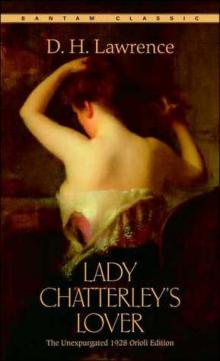 Lady Chatterley's Lover
Lady Chatterley's Lover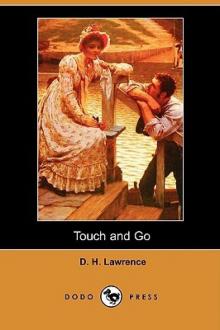 Touch and Go
Touch and Go The Wintry Peacock
The Wintry Peacock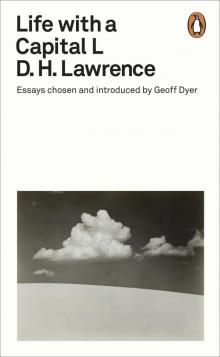 Life with a Capital L
Life with a Capital L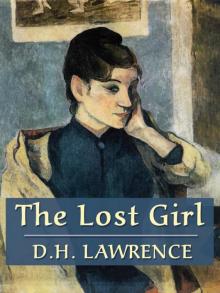 The Lost Girl
The Lost Girl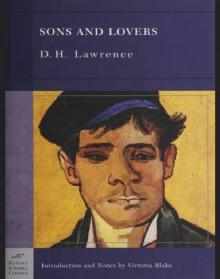 Sons and Lovers
Sons and Lovers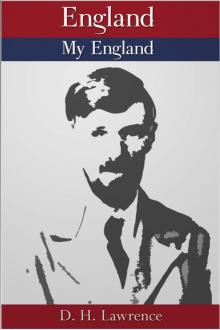 England, My England
England, My England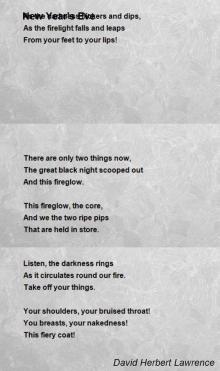 New Poems
New Poems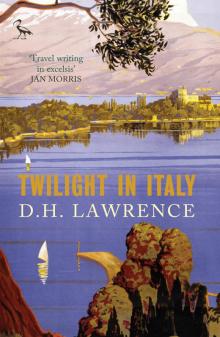 Twilight in Italy
Twilight in Italy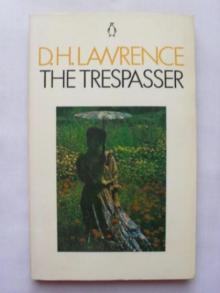 The Trespasser
The Trespasser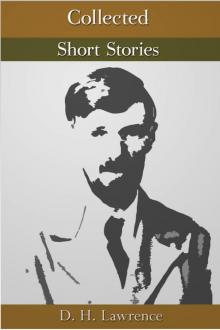 The Collected Short Stories
The Collected Short Stories The First Lady Chatterley's Lover
The First Lady Chatterley's Lover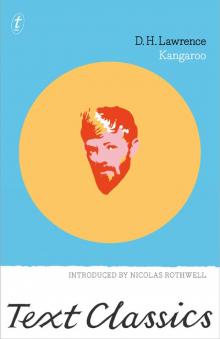 Kangaroo
Kangaroo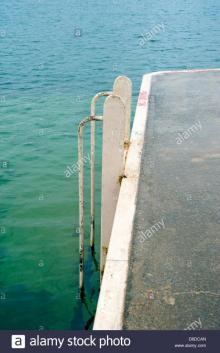 Bay
Bay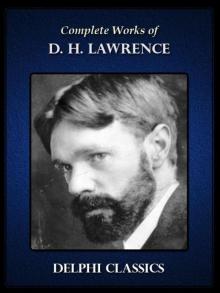 Complete Works of D.H. Lawrence
Complete Works of D.H. Lawrence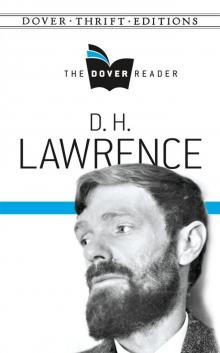 D H Lawrence- The Dover Reader
D H Lawrence- The Dover Reader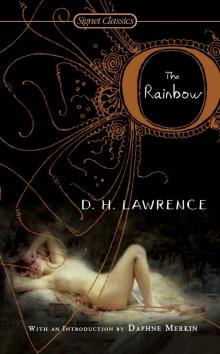 The Rainbow (100th Anniversary ed.)
The Rainbow (100th Anniversary ed.)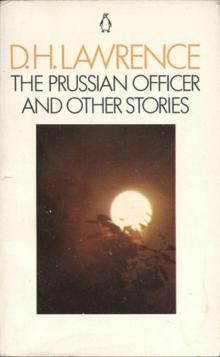 The Prussian Officer
The Prussian Officer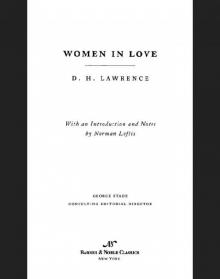 Women in Love (Barnes & Noble Classics Series)
Women in Love (Barnes & Noble Classics Series)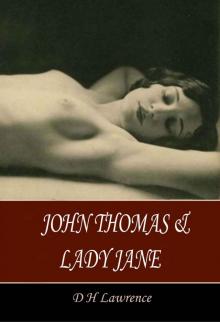 John Thomas and Lady Jane
John Thomas and Lady Jane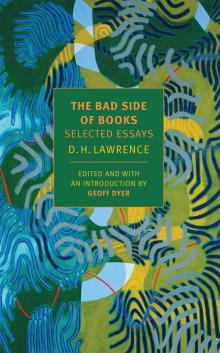 The Bad Side of Books
The Bad Side of Books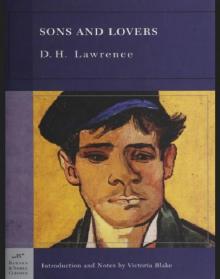 Sons and Lovers (Barnes & Noble Classics Series)
Sons and Lovers (Barnes & Noble Classics Series)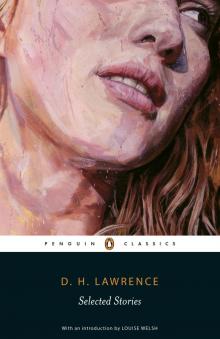 Selected Stories
Selected Stories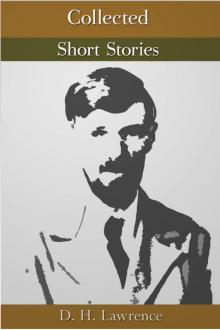 Collected Short Stories
Collected Short Stories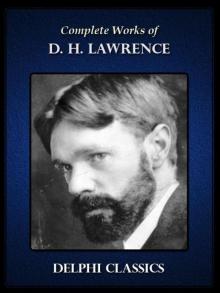 Complete Works of D.H. Lawrence (Illustrated)
Complete Works of D.H. Lawrence (Illustrated)